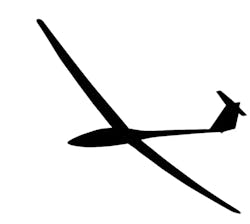Global Electric Aircraft Market To Reach US$ 3731.3 Million By 2027
The global electric aircraft market was valued at US$ 1111.6 Mn in 2019 and is expected to reach US$ 3731.3 Mn by 2027 at a CAGR of 18.9% between 2020 and 2027, as highlighted in a new report published by Coherent Market Insights.
Technological advancements in unmanned aerial vehicles (UAVs) or drone technology is expected to propel the globalelectric aircraft market growth over the forecast period. The regulatory authorities have taken ample efforts to regulate the use of UAVs to ensure that safety measures are in place such as drones are operated safely, without harming public and national security. For instance, in 2018, Airbus expanded its commercial drone service named Airbus Serial in Singapore. This aerial service leverages the latest software technologies to provide information that is provided by drone, high altitude aircraft, and other sources. With its imagery services, Airbus Serial provides services to many industries such as oil & gas, agriculture, utilities, and others. There is a constant demand for commercial drones for use in various sectors including agriculture, defense, filming, and weather monitoring. Currently, the companies are focused on creating applications and software to make the safer use of drones, which will lead to normalization of drones within mainstream society and expected to drive the market growth. For instance, in September 2015, Qualcomm Technologies, a subsidiary of Qualcomm Incorporated, launched Snapdragon Flight to provide drones with the intelligence to perceive objects within their flight path for much safer navigation.
Electric Aircraft Market - Impact of Coronavirus (Covid-19) Pandemic
COVID-19 pandemic is expected to slow down growth of the market during the forecast period. Due to the Covid-19 pandemic, many industries have witnessed a significant negative shift in their businesses. Most of the people are staying at home and strictly following social distancing in order to contain the spread of coronavirus and due to this, the number of air travelers have decreased and have impacted the airline industry. Many airline industries are filed for bankruptcy due to less liquidity of cash flow. For instance, in August 2020, Virgin Atlantic, a U.K.-based airline industry, filed for protection under chapter 15 of the bankruptcy code. Hence, demand for new commercial aircraft has also declined due to reduced aircraft passenger traffic. For instance, in June 2020, Boeing reported that it received nine new aircraft orders and received 18 cancellation requests for placed order. Moreover, airline manufacturers are focusing on investing in new designs to promote social distancing. For instance, in April 2020, HAECO Cabin Solutions launched a new product named flexible cargo stowage that allows airlines to separately book passengers on board and also utilize unsold seats for transportation of cargo.
Key Trends and Analysis of the Global Electric Aircraft Market:
- North America held dominant position in the global electric aircraft market in 2019 and is expected to retain its dominance throughout the forecast period. This is attributed to increasing demand for aerial imaging in the U.S. UASs overcome the drawback of endangering lives in adverse climatic conditions since they are capable of staying in the air for up to 30 hours. Thus, they are capable of performing accurate repetitive scans of a region in complete darkness and fog through computer control. Furthermore, unmanned aerial systems account for significantly lower operating costs as compared to manned aircrafts. According to the Association for Unmanned Vehicle Systems International (AUVSI), the direct operational cost of UAS per hour is around US$ 3.36 compared to US$ 250 to US$ 600 per hour for manned aerial systems. Moreover, presence of large market players such as The Boeing Company, Lockheed Martin Corporation, Denel Dynamics, and Textron Inc. is expected to offer lucrative growth opportunities in the near future.
- Europe is expected to show significant growth over the forecast period, owing to stringent regulatory policies and norms across the region to reduce harmful emission from aircraft. Moreover, European governing bodies are focusing on research programs such as Clean Sky Joint Undertaking to expand the market growth. Furthermore, increasing GHG emissions is encouraging aircraft manufacturers to adopt electric aircrafts. For instance, in 2018, according to European Union, the direct emission from aviation accounted for around 3% of the total European Union GHG emissions.
- Among application, commercial segment held dominant position in the market in 2019 and is expected to retain its dominance during the forecast period. This is owing to the presence of major players such as Boeing and Airbus. Aircraft manufacturers are adopting for new technology in electric aircraft for better efficiency and safety. For instance, Airbus, for its A390 and A350 models, replaced three hydraulic systems with two electric systems in order to provide safety in the aircraft. For instance, in February 2019, Safran Electrical & Power, a subsidiary of Safran, signed contract with XCAC, a China-based company who manufactures commercial aircraft. Through this contract, Safran Electrical & Power will provide electrical general system to MA700, civil regional turboprop aircraft.
Major players operating in the global electric aircraft market include Boeing, Airbus, Raytheon Technologies Corporation, Honeywell International Inc., Thales Group, Lockheed Martin Corporation, Zunum Aero, YUNEEC, Elektra Solar GmbH, PIPISTREL, BYE AEROSPACE, DELOREAN AEROSPACE, LLC, Joby Aviation, Siemens, Safran, Bombardier, TTTechComputertechnik AG, and AgustaWestland
